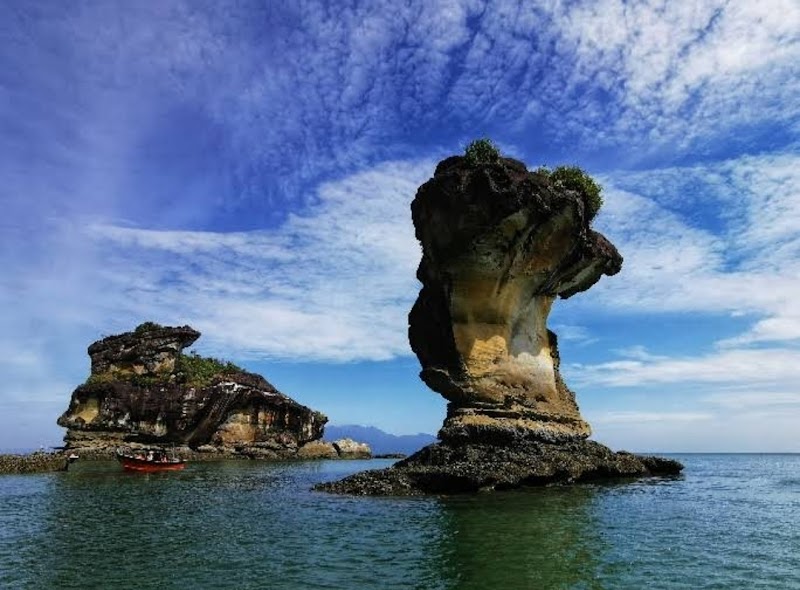
Kuching Festival spills vibrant energy into Sarawak’s capital, blending traditional arts, delicious street food, and lively performances over several captivating days. Explore this rich cultural celebration with practical tips to help you navigate, enjoy, and fully experience Kuching’s unique event.
Stay Hydrated
Sarawak’s tropical climate can quickly exhaust you; carry water or purchase fresh local beverages at festival stalls.
Wear Comfortable Footwear
Expect to walk on paved streets and crowded zones; sturdy, breathable shoes will keep your feet comfortable.
Protect Yourself from the Sun
Use sunscreen, hats, and sunglasses during daytime events to avoid sunburn and heat fatigue.
Plan to Arrive Early
Popular events fill fast—arriving ahead of time allows better positioning and calmer surroundings for photos and viewing.
Kuching Festival: A Colorful Celebration of Culture and Community in Sarawak
Each year, the vibrant city of Kuching in Sarawak transforms into an open stage where tradition, artistry, and community spirit come alive during the Kuching Festival. This event isn't just a gathering; it's an immersive journey into the heart of Borneo's rich cultural mosaic. Streets swell with energized crowds, vendors line the roads selling crafts and local delicacies, and performances echo through open-air squares. It’s a blend of celebration and discovery — perfect for travelers seeking both excitement and cultural insight.
The Festival unfolds over several days, often in late June to early July, inviting visitors to experience a carefully balanced lineup of performances, workshops, and food bazaars. From traditional dances that challenge your rhythm to stands where Sarawak laksa and kolo mee dare your taste buds, every moment propels you into the pulse of local life. Practical travelers will appreciate the layout: key festival zones are walkable from Kuching city center, so the adventure is accessible without complex logistics.
Plan your visit with timing in mind. Afternoon events can be bathed in tropical heat, so lightweight clothing, a hat, and sunscreen are essentials. By evening, the festival lights and cooler temperatures offer a perfect atmosphere for outdoor performances under starlit skies. Don't hesitate to pace yourself—hydration is critical; stalls selling fresh coconut water and local juices beckon with refreshing relief.
Local artisans present crafts ranging from intricate beadwork to hand-carved wood souvenirs. For those aiming to explore beyond the fest, Kuching’s waterfront invites quiet reflection, contrasting with the festival’s rhythm, offering panoramic views of the Sarawak River daring you to pause and take it all in. Nearby, the guarded pull of Kuching’s Chinatown and its historic streets provide a dose of old-world charm, allowing you to balance the high-energy festival with serene exploration.
Engaging with Teatro Kota and local drumming circles highlights the Festival’s dedication to preserving heritage while embracing contemporary innovation. It’s a reminder that the culture celebrated here is fiercely itself — evolving, alive, and welcoming.
Kuching Festival is both a cultural feast and an invitation to engage responsibly. Protecting what you admire by disposing of waste thoughtfully and respecting local customs ensures the celebrations endure. Whether this is your first cultural festival or your tenth, Kuching offers a practical, exhilarating experience that connects you deeply with the spirit of Sarawak.
Nearby Trips
All Adventures
Boat Charters
Water Activities
Adventures near Kuching, Sarawak
Discover the unique and memorable adventures that make Kuching, Sarawak special.
Frequently Asked Questions
When does the Kuching Festival usually occur?
The festival typically runs from late June to early July, timed to take advantage of relatively stable weather and to align with local cultural calendars.
What kind of performances can visitors expect?
Expect a diverse range: traditional dances, contemporary music, theatrical presentations, and street performances showcasing Sarawak and Borneo’s rich cultural heritage.
Are there local food options available during the festival?
Yes, the festival offers abundant street food stalls featuring Sarawak specialties like laksa, kolo mee, and fresh tropical fruits, providing both quick bites and full meals.
Is Kuching Festival family-friendly?
Absolutely. There are plenty of kid-friendly activities, interactive workshops, and cultural demonstrations designed to engage visitors of all ages.
How accessible is the festival for tourists with limited mobility?
The main festival areas are mostly on paved streets in the city and are moderately accessible. It’s advisable to check specific venues for wheelchair access and plan ahead, as the environment can get crowded.
Are there opportunities to purchase traditional crafts?
Yes, local artisans display and sell handmade crafts, including beadwork, textiles, and woodcarvings that highlight Sarawak’s indigenous artistry.
Recommended Gear
Lightweight Walking Shoes
Provides comfort and support for walking on urban pavement and through crowded festival zones.
Reusable Water Bottle
Stays hydrated in humid conditions; easy to refill with local drinks at stalls.
Sun Hat or Cap
Protects head and face during the bright afternoon sun.
Light Rain Poncho
Useful during unexpected tropical showers common in pre-festival months.
Local Insights
Hidden Gems
- "Taman Budaya Sarawak – a quieter cultural park hosting smaller performances"
- "Jalan Carpenter – a street near the festival known for artisan shops and less commercial craft stalls"
Wildlife
- "Monitor lizards occasionally spotted along quieter riverbanks"
- "Tropical birds such as hornbills glimpsed near city green spaces"
History
"Kuching Festival began as a local effort to boost community pride and tourism and has grown into a premier event reflecting Sarawak’s ethnic diversity and cultural resilience."
